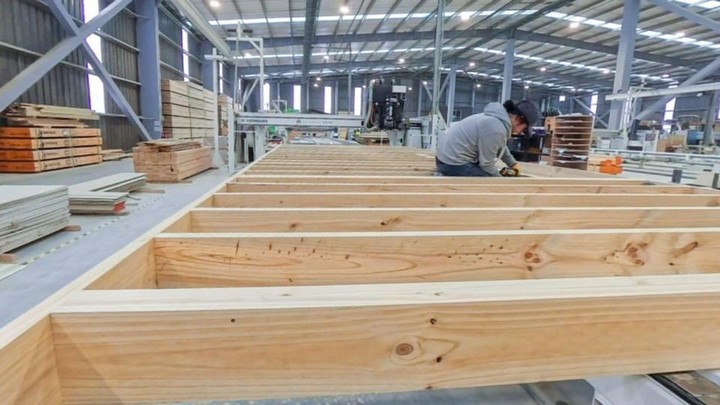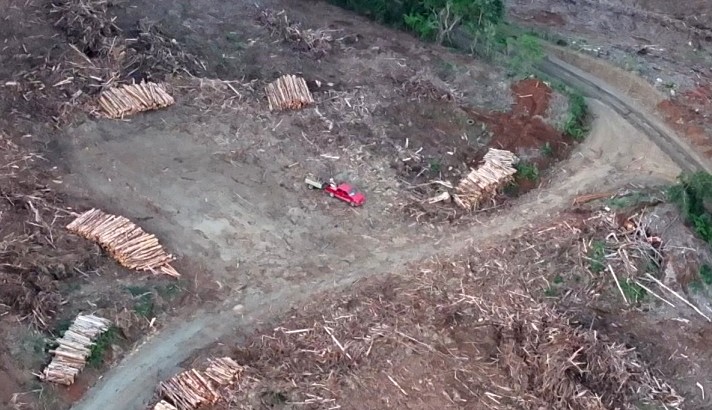Frane Zilic: "Wood is the only structural material that enables the transition to sustainable construction"
In a scenario where Chile must accelerate the fulfillment of its environmental commitments, wood construction through modern methods emerges as a significant bet for the construction industry, one of the productive sectors currently generating the most waste. Indeed, the recent update of the Nationally Determined Contributions (NDC) 2025-2035 included, for the first time, the task of developing a National Wood Construction Strategy. This, according to architect Frane Zilic, manager of the Regional Strategic Program Biobío Wood, marks a decisive turn: it is no longer just about isolated projects or niche innovations, but a state mandate.
The good news comes just as the strategic Corfo program he leads in the country's main forestry and wood region begins its third year of execution. The tide, Zilic explains, is beginning to change, and the challenge will be to continue advancing in the coordination of public and private actors to transform the way building is done in Chile.
–There is much talk about sustainability today, but how does that translate into construction and wood in particular?
We live in a highly connected world, where our local decisions have an increasingly broader reach and the globalized market opens new businesses as long as we are able to align with international requirements. In this line, Chile has taken various actions that allow us to present ourselves as a reliable and responsible country. One example is the enactment of the framework law on climate change in 2022, which obliges us to achieve carbon neutrality by 2050. Another is the recent creation of the Taxonomy of environmentally sustainable activities, which provides a common reference framework to attract international green investment. And a third precedent is the update of the Nationally Determined Contributions (NDC) 2025-2035, which generates a solid commitment before the international community.
–What relevance does this last update have in relation to wood?
In this document, for the first time, wood is officially mentioned as a solution to the environmental problems of construction. We are moving towards prescribing the solution instead of letting the market act freely. This might sound unattractive, but it is necessary due to a market failure.
–You have said that wood is the only structural material that allows a real transition to sustainable construction. Why?
On paper, wood is renewable, recyclable, lightweight yet strong, biodegradable, grows with solar energy, is biocompatible, and is a source of energy storage. In theory, these arguments should be more than enough to far surpass the competition. But for it to be truly sustainable, it has to be economically competitive and adoptable by the market. There lies the problem: wood has a major flaw, which is that it is highly versatile. This quality creates a volatile and distracted industry, which does not invest enough in standards, training, or certification to ensure quality in construction, because it can always resort to alternative uses when sales fail. This focus asymmetry compared to other materials prevents it from competing.
–Should the State then regulate more directly on this matter?
Ideally, it would define performance indicators and let the market act freely to find the best material. But that doesn't work because it leaves out the best material we have available and is also slower. And we have no time to waste. Today, the construction process generates 11% of national carbon emissions and 35% of our waste. If we add negative indicators in social and economic aspects, it is evident that construction needs a deep and rapid review of its processes and materials.
–How does the National Wood Construction Strategy fit into this context?
It is a very important commitment. We have two years to reach an agreement, and it won't be easy because it cannot be an isolated strategy. It will have to engage in dialogue with the Ministry of Housing and Urban Development's National Sustainable Construction Strategy, with the Ministry of Agriculture for raw material supply, with the Ministry of Science for applied research, with the Ministry of Education for human capital training, with the Ministry of Public Works for demand articulation, in addition to regional governments, municipalities, universities, SERVIU, the private sector, civil society, banks, and many other actors.
–What does it mean that the National Wood Construction Strategy was included in the update of the NDC 2025-2035?
It is a historic step. The commitments were established from the Ministry of Environment, meaning that the advantages of wood construction are being understood in various decision-making circles. What the NDC achieves is to show that wood construction is not just a matter of design or specific innovation, but a state commitment aimed at transforming the way we build in Chile. Wood is not only posed as a means to achieve more sustainable construction but is also understood as a tool for the State, through its purchasing power, to boost local development. That will require articulating regulatory, technological, and productive instruments to reach 2035 with clear indicators of wood participation in public and private works.
–When talking about sustainable construction, does it necessarily refer to wood construction?
Not necessarily, but today wood is the only available material that allows a transition simultaneously covering economic, social, and environmental aspects. It's not that other materials aren't valuable, but none offer the capacity to drive a complete productive chain, generate innovation, and contribute to carbon neutrality at the same time.
A Great Step for Biobío
–What role does the Biobío Region play in this process?
The region is the forestry and wood capital of the country, and we have been working on building a sustainable productive ecosystem based on this resource. The Biobío Wood Strategic Program has managed to articulate companies, guilds, universities, SMEs, and the public sector. Corfo Biobío has promoted projects ranging from productivity manuals to prototypes of social housing in wood, like the one at the University of Concepción. This has allowed progress in building the necessary trust to lead the regional industry towards more complex challenges.
–An example of that articulation was the agreement between Corfo and Serviu in San Pedro de la Paz. What is the aim of building that pilot?
More than testing the houses themselves, what is intended to be piloted is the capacity of local SMEs to manufacture and assemble standardized components in an industrialized process. It's about moving from theory to practice: those houses will be inhabited by real families, and at the same time, they will provide necessary evidence to transform the industry. What the pilot opens is the possibility for social housing to be built in less time, with better standards, lower environmental impact, in a competitive ecosystem that ensures the participation of SMEs.
–How does this change the horizon for regional SMEs?
It opens a huge door for them. Until now, the industry was very concentrated in large players. With this new model we are piloting, SMEs can mass-produce, reduce costs, and gain competitiveness. Essentially, it democratizes the possibility of participating in a market that previously seemed closed.
–You speak of a paradigm shift. Where does this profound transformation take place?
In that with this new process, the State's purchasing power is used to influence the sustainable development of the territory. This involves understanding new sustainability standards and pushing with clear indicators that do not restrict the innovation and competitiveness of the private sector. To achieve this, coordination is needed among ministries, public services, universities, companies, guilds, and civil society.
Source:Sabes

















